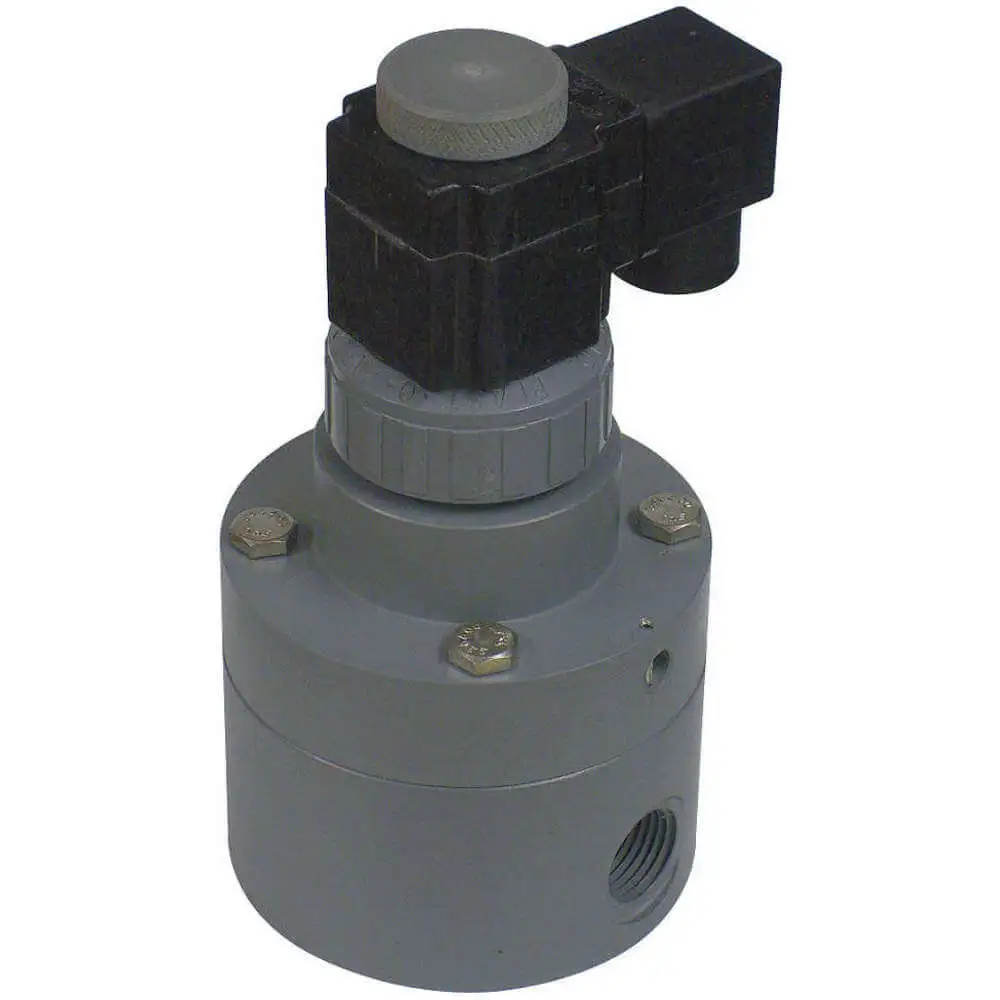Plast-O-Matic PS150EPW11-PV solenoid valve is used to shut off ultra-pure and highly corrosive liquid flow. As long as a 5 psi difference is maintained, it can withstand caustics, acids, chlorine solutions, solvents, deionised water, sodium solutions, brewery operations and reverse osmosis water.
Features:
- Plast-O-Matic PS150EPW11-PV solenoid valve features rugged thermoplastic construction to tolerate corrosion.
- It has a patented Fail-Dry vented design for a visual warning of seal malfunction.
- The solenoid valve is appropriate for strong backpressures, such as high-pressure chemical injections and regulating flow to spray nozzles.
- It has a dynamic bellows barrier seal that stops fugitive emissions from escaping into the atmosphere.
- This model has no wetted metal parts and a Viton seal to withstand fluid temperatures up to 140 degrees Fahrenheit.
- It comes with Class F coil insulation and has a normally closed configuration.
Standards and Approvals:
Frequently Asked Questions:
Q. How does a solenoid control a valve?
A. A magnetic field is produced by an electric current flowing through the coil. The plunger is forced upward by the magnetic field, opening the orifice. The fundamental idea behind how solenoid valves open and close is this.
Q. What causes solenoids to fail?
A. The coil will malfunction and perhaps burn out if the wrong voltage is applied. The coil might potentially be harmed by electrical surges or spikes. Coils that are burnt out or are beyond repair and must be replaced.
Q. How do you fix a solenoid problem?
A.
- Verify that the power supply is adequate and the coil can release heat.
- Replace the coil and never turn it on when it's not attached to the valve.
- Inspect the inside for dampness and refill as required.
- Along with replacing any bent or broken armatures, make sure your valve is compatible with the media.
 € EURChange Country
€ EURChange Country


